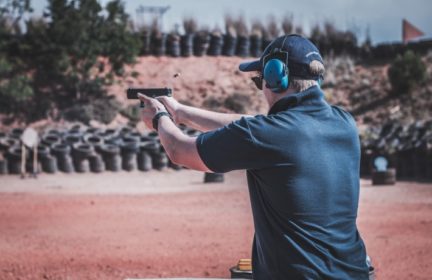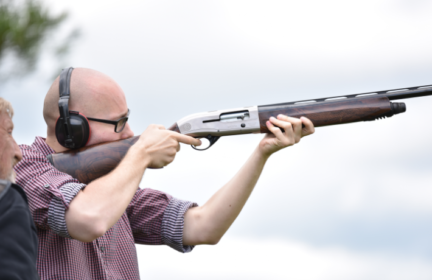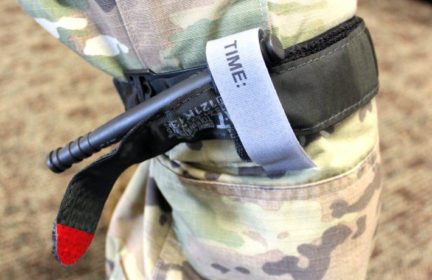Basic Medical Guide
Does anyone have a “step by step” or “how to” guide regarding the most common injuries we should expect in a bug out scenario? Obviously I know how to treat a cut or small burn, but I’d love a guide in my pack that would walk me through some of the most common injuries and procedures up to or including gunshot wounds, heavy burns, breaks/sprains, etc. I know it won’t be an exact guide but I’d like to at least have something to go by if someone ingests something toxic, gets shot, breaks a bone, etc rather than me being left to myself trying to fumbile through these scenarios in the wild. What do y’all have?!
-
Comments (12)
-
hikermor - September 20, 2020
You want training, with mphasis on hands on, rather than a book. But books can be a useful supplement/
-
Kempy - September 20, 2020
Definitely gonna get some training. I have basic training. Just curious if there’s a field manual or something similar. Even if I’m perfectly trained, I’d like something for if I’m incapacitated and someone has to stitch me up in an emergency. That kinda thing. Not intending this to be the one and only source of knowledge
-
-
Essie Carroll - September 21, 2020
There are some good recommendations here
https://theprepared.com/prepping-basics/reviews/best-prepper-survival-books/#medical
-
Kempy - September 21, 2020
Awesome, those 2 manuals were the ones I was looking at on Amazon! Thanks!
-
hikermor - September 21, 2020
Any course you take will include some sort of text book or written material – good for refresher retraining
-
Kempy - September 21, 2020
Any suggestions on courses? I was thinking the Red Cross First aid and wilderness course online but I have to get CPR re-certified first
-
MajorH - September 21, 2020
First Aid / CPR is a basic class, but not much hands on in the emergency medicine category. I think the wilderness course would be great and also check out “Stop the Bleed”. That’s a must course. If you are into YouTube, check out prepmedic, lots of videos that could be useful.
-
hikermor - September 23, 2020
What can be more “handson” than manual chest compressions. Still, something that will rarely be necessary in a wilderness setting….
-
Kempy - September 23, 2020
Yeah I was certified for CPR previously, but the Red Cross is only doing online recertifications right now
-
-
C P.Contributor - September 25, 2020
I think that a lot of guides provide good information, the key is probably finding the level of detail you are looking for. A few options to consider:
1) The Prepper’s Medical Handbook. I have a copy that I haven’t gone through in depth yet (it was sent to me by a colleague), but I’m very impressed with what I’ve seen so far. Very comprehensive. However, it sometimes assumes you have access to medicines (e.g., antibiotics) the average person won’t have. It has some illustrations (e.g., on how to suture), but they are kind of sporadic; there aren’t illustrations for most things.
2) The Survival Doctor’s Complete Handbook. Very readable and approachable. I think that it could be a good ‘beginner’ pick. I don’t own a copy, but just ordered one. From the sample and reviews I think it is well-illustrated.
3) EMS Field Guide – BLS version. This is a pocket-sized, spiral-bound pad designed for EMTs. You flip to the injury or problem and there is a one-page checklist of what you should do. It won’t explain why you are doing it or exactly how to do it and you need to have enough training to understand the abbreviations used, but if does provide a concise answer to ‘What to I do?!?’
4) Medicine for Mountaineering. I have the 5th edition and I can’t vouch for the 6th (current) version, but I find that it has a nice balance of explaining what is going on and providing concise directions for treatment. Like the Prepper’s Medical Handbook, it is light on illustrations, so you need to have some basic knowledge to use it well.
As for courses, you might consider a Wilderness First Responder (WFR) course. It’s an 80 hour training, and will be much more in-depth than a Red Cross first-aid course. You can do it in about 10 days, which can be manageable depending on your work situation. Here’s a link to a school I’m familiar with: https://www.landmarklearning.org/course/nols-wilderness-first-responder/
It is also possible to do EMT training in a compressed format (look for ‘EMT Intensive’ programs). I did this a few years ago. The plus side is that you learn a lot in just 3 weeks or so. The downsides are that (a) it is expensive and (b) if you can’t find a place to volunteer or do part-time work as an EMT afterwards, a lot of that knowledge that you crammed into your head starts to trickle out and get lost.
Lastly, if you do a CERT program (https://theprepared.com/community/guides/cert-training-community-emergency-response-team/) you’ll get some first-aid training.
-
C P.Contributor - September 29, 2020
Update: I got my copy of The Survival Doctor’s Complete Handbook, and can confirm that it is an excellent beginner text. It has a lot of illustrations and very clear explanations. In fact, most people would probably learn a lot just reading the book all the way through, as the book is structured mostly around body systems, explaining how each works and covering common ailments affecting each. It is not as comprehensive as some other texts, but it may be a better place to start, especially for anyone without much first aid training.
-
-
885 - October 13, 2020
As mentioned below, EMT or other first aid training is optimal.
If training is not feasible though then in addition to the resources listed below, a EMT/paramedic textbook can be a useful reference and can be bought from Amazon.
Nancy Caroline’s “Emergency Care in the Streets” is a classic. Emergency Care and Transportstion of the Sick and Injured by the American Academy of Orthopedic Surgeons is another quality text.
These go beyond just first aid and discuss emergency scene safety, vehicle extrication, communications and operational issues, anatomy, physiology and pharmacology and other topics. Good reference material and also a good way to learn about how EMS services approach things.
I suggest looking at the contents of different textbooks using Amazon’s “look inside” feature to find one that offer the content most relevant to your interests.
-
- News for the week of 2025-06-30 - 9 hours ago
- News for the week of 2025-06-23 - 1 week ago
- News for the week of 2025-06-16 - 1 week ago
- News for the week of 2025-06-09 - 3 weeks ago
- News for the week of 2025-06-2 - 3 weeks ago
This forum is heavily moderated to keep things valuable to as many people as possible. Full community policies are here. The basics:
- 1. Be nice to each other.
- 2. Stay focused on prepping.
- 3. Avoid politics, religion, and other arguments.
- 4. No unfounded conspiracies, fake news, etc.
- 5. Debate ideas, not people.



